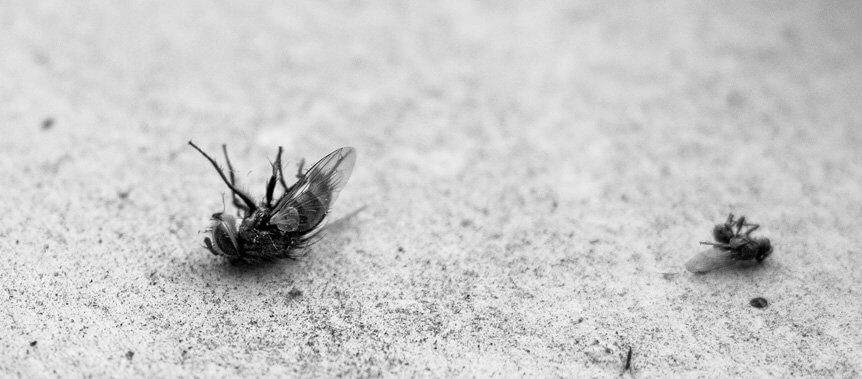Keeping belongings in long-term storage requires a much greater level of care. Invasions and infestations by pests are very real threats. Perfect homes for insects and rodents include cardboard boxes and furniture with upholstery. For pests, it is an added bonus when these items are in storage since detection is usually delayed for a long period of time.
If you have plans for long-term storage, first, be sure to buy insurance to cover any damage that may occur to your belongings. Secondly, it’s important to store items in a way that deters pests so that you can avoid infestations. If there has been a pest invasion, the health of your family members can be endangered when items are returned to the home. For instance, the presence of roaches can trigger asthma in children. Here are some tips on how to keep pests out during long-term storage.
How Storage Facilities Help Keep Pests Out
It is in the best interest of storage facility owners to ensure that pests aren’t running rampant on the property and destroying clients’ belongings. The results of pest infestations include bad reviews for the business, angry customers whose belongings have been destroyed, and lost income. Potential renters should not assume that pest control is a priority at a storage facility. The following are the things a prospective renter should look for and/or ask about, as evidence that the facility is taking basic pest control measures.
Pest Control Treatments
Before deciding on a storage facility for long-term storage, ask the facility manager about the specific approach to keeping pests out. High-quality storage facilities maintain ongoing contracts with pest companies. All storage buildings should receive routine treatments that help keep pests out.
Trim Back Landscaping
A storage facility should be careful to ensure that any bushes, plants, shrubberies, and trees on the property are not in contact with storage units or the buildings they are housed in. The various forms of plant life are home to spiders, moths, mites, slugs, grubs, scorpions, and beetles. These and other pesky creatures tend to migrate to any building the plants brush up against. If possible, visit the site before deciding where to store your belongings. That way, you can check for yourself to see whether landscaping is too close to buildings.
Offer Pallets & More for Sale
It is important that boxes and other belongings are stored up off the ground, so that insects don’t make a home underneath them. Lining the floor with pallets is one of the best approaches to avoiding this problem. Ask if the storage unit sells pallets and other items recommended for safe storage. Air-tight containers, plastic boxes with lids, plastic furniture wrap, and resealable plastic bags are also helpful packing supplies that contribute to effective pest control. If the facility sells these things, it’s a sign that they are encouraging tenants to avoid attracting pests.
Empty Dumpsters & Garbage Cans
Garbage collects more critters and rodents the longer it sits. Make sure the storage facility you choose frequently takes out garbage and has dumpsters emptied.
Prevents Standing Water
Moisture build-up attracts insects and rodents and also becomes a breeding ground for mold and fungus. Ask the facility manager whether downspouts and gutters are routinely cleaned and wet leaves removed, to help prevent standing water on the property. Also, do they schedule routine roof and gutter maintenance, which also reduces the risk of roof leaks and flooding?
Packing for Better Pest Control in Long-Term Storage
There is only so much the storage facility can do to keep pests out. The responsibility for pest control also falls on tenants. It’s not unusual for renters at a storage facility to bring pests into their storage unit amidst their belongings, usually unknowingly. The following are things you can do to make sure you don’t bring pests with you plus steps to prevent pests from being attracted to your storage unit.
Avoid Using Cardboard Boxes
Pests easily invade cardboard boxes. It only takes a few insects to create an out-of-control infestation. Plastic containers with lids are recommended, instead, because they are far more pest-proof than cardboard.
What to Keep Out
Live plants and paper goods stored in boxes or bags should be avoided because they are highly desirable to pests and will attract them to your storage unit. If you are storing kitchen appliances large and/or small, make sure they are thoroughly cleaned before going into storage. If you can’t get all the crumbs and traces of food out of your toaster, for instance, don’t put it in storage.
Keeping food out of storage extends to eating during moving. No food should be set or left on furniture when moving your things because crumbs could be left behind, which will attract pest invasions.
Wrap Upholstered Items
Upholstered furniture and other fabric items too large to fit into a plastic container, such as decorative pillows, should be fully wrapped in plastic. Moths are attracted to fabric because their larvae feed on it. The best moth deterrents are cedar blocks. Moth balls aren’t the best option for moth control because they make everything smell bad, and they can be hazardous if found by children.
Use Pest Deterrents in your Unit
Set rat traps or mouse traps near the door and use bug spray along the floor all around the perimeter as well as up the corners of the unit. Soak cotton balls in lavender or peppermint oil, as a natural type of pest deterrent.
Check Your Belongings Routinely
After you’ve taken all the right precautions to keep pests out, a follow-up plan is all that’s left. If you will be too far away to check on your storage unit yourself, hire a pest control expert to check on your storage facility occasionally. Ask that any needed treatments be applied if there are signs of pests. You greatly increase the chances that your belongings will be pest-free by taking the above-mentioned steps for pest prevention during long-term storage.

